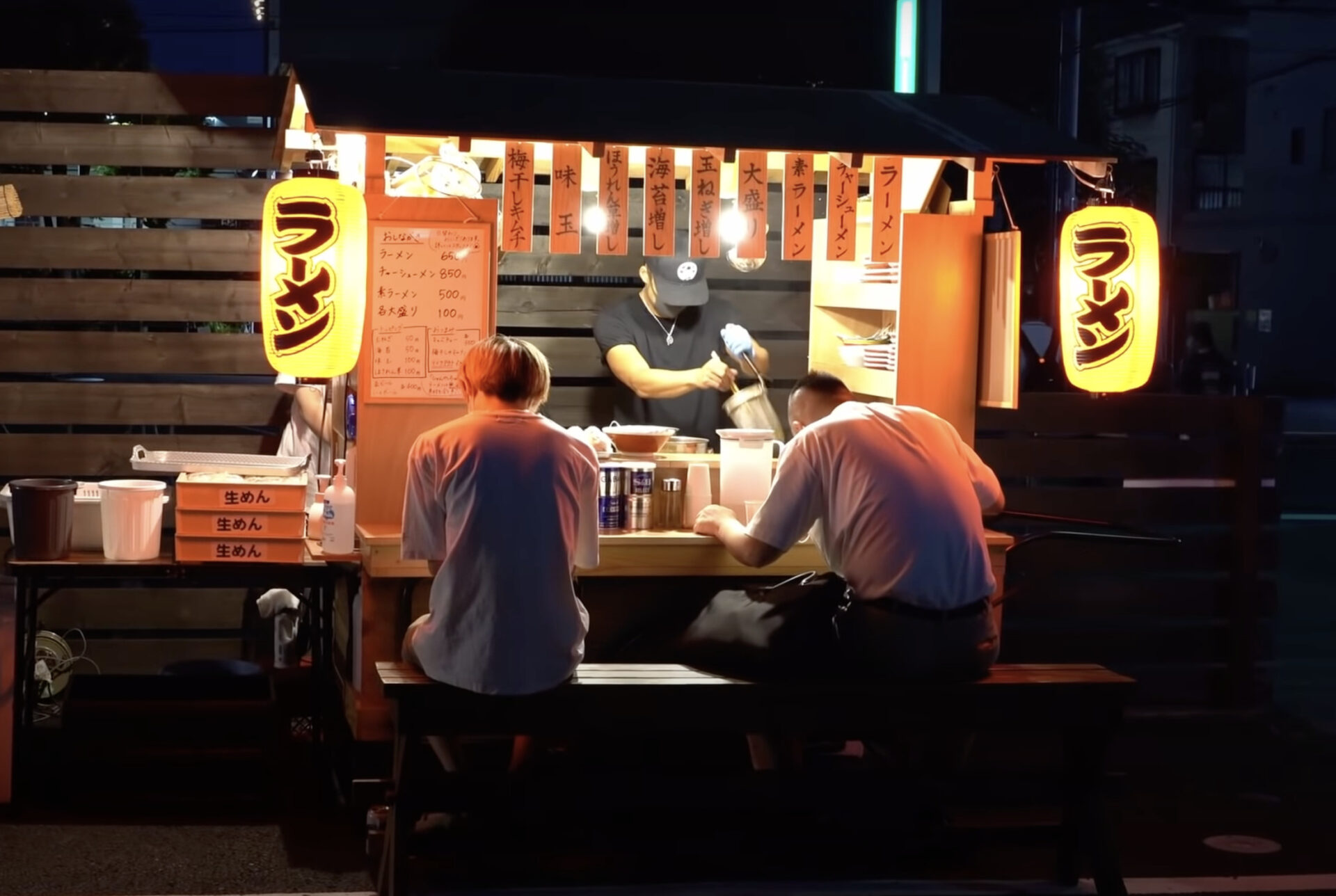In Japan, ramen specialty restaurants are everywhere, and ramen can be easily ordered at family restaurants and convenience stores. Furthermore, the demand for delivery services has recently increased, making it easy to enjoy the taste of a restaurant at home. However, the number of ramen stalls is decreasing every year.
In this article, we would like to look at the history of ramen stalls in Tokyo.
History of Ramen stalls in Tokyo
The origin of Ramen stalls dates back to the 1600s. At that time, they were not in the form of mobile stores with roofs as you might imagine, but were carried by people and sold on the street. The main items sold were soba (buckwheat noodles) and udon (wheat noodles), and because they were sold to merchants until dawn, they were popularly known as “Yonaruki soba” and “Yonaruki udon”.
There was no such thing as “ramen” back then and even when it became popular with the general public; it was eaten at Chinese restaurants and other stores, not at stalls. Then the Great East Japan Earthquake struck. Many ramen shops in Tokyo and Yokohama were severely damaged by the earthquake. To overcome such as situation, a stall that could be started quickly was born. Thus, ramen stalls spread throughout Japan. However, another difficulty awaited them. This was World War II.
World War II caused a lot of ramen shops to close, and they didn’t reopen until soon after the war, as black market stalls were set up by war victims and repatriates from China who were looking for a way to make a living.
This is the prototype of today’s mobile stalls. After that, portable stalls such as ramen and oden (dumplings) continued to operate throughout the town, but they gradually disappeared and are now rarely seen.
Why did they disappear?
The biggest reason for the disappearance of stalls is legal restrictions.
Stalls operating on the street are required to obtain a food business permit as a restaurant and a road occupancy permit or road use permit to use the street surface. Today, when hygiene awareness is much higher than in the past, it is more difficult for stalls to obtain such permits. In addition, these stricter regulations were prompted not only by hygiene issues but also by complaints from neighboring stores. This is because stalls that took away customers without paying rent were considered an unwelcome presence by neighboring stores. Changes in store operating styles also contributed to the decline of stalls.
When many stalls existed, there were still few stores that stayed open until late at night, and there was demand from people on their way home from izakaya bars or after working late. However, the number of convenience stores, karaoke bars, and other establishments open late at night gradually increased, and the stalls faded away.
Ramen stalls in Tokyo are still in business today. Although they are in danger of extinction, for this reason, it is not true that they have disappeared entirely. Ramen stalls still exist in Tokyo. This time, we would like to introduce you to two of the best Ramen stalls in Tokyo.
Kochan
This restaurant, which has a stall near Toranomon Station, serves old-fashioned Chinese noodles in a light chicken broth. The soup is made with a light and refreshing chicken broth, and the ingredients are the same as those used in the old days: pork, nori, naruto, egg, green onion, and more menma (pickled bamboo shoots).
Yatai Ramen Yukitora
Ramen stall located at the east exit of Suidobashi Station. The refreshing soy sauce ramen is a dish that is gentle on the body after a night of drinking. The old-fashioned Tokyo ramen is popular among foreigners, and they also offer take-out for foreign tourists using nearby hotels. The famous charred pork and garlic will warm up your cold body.




Comments